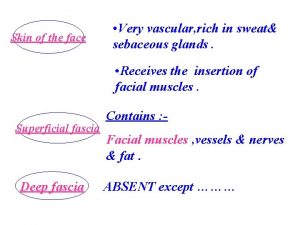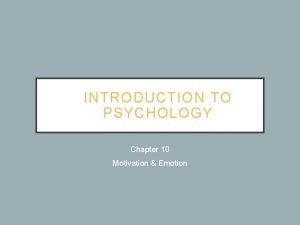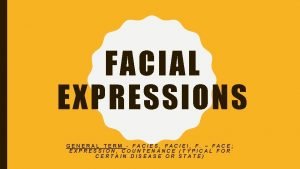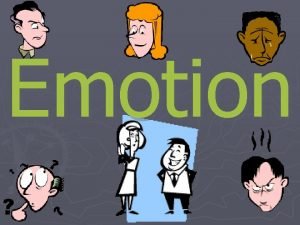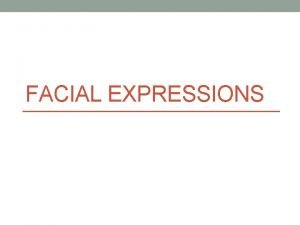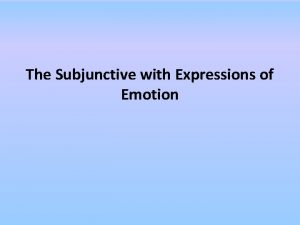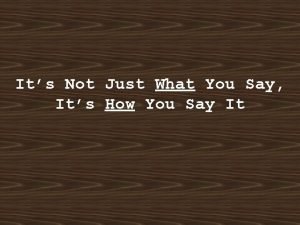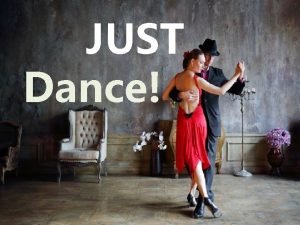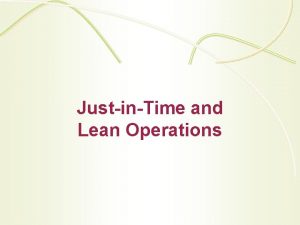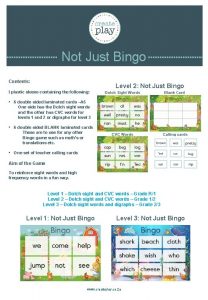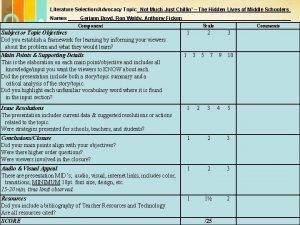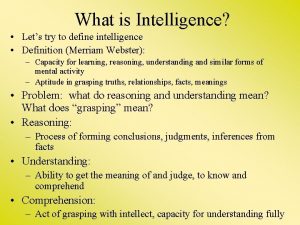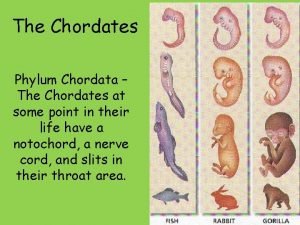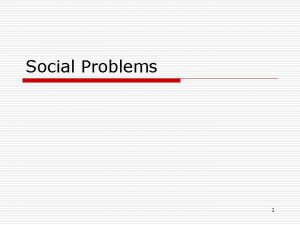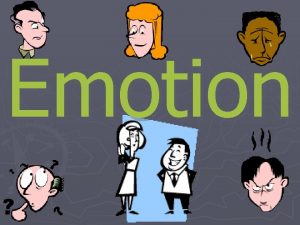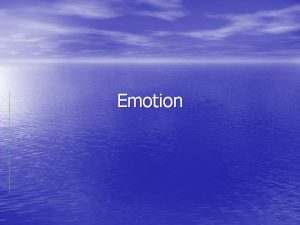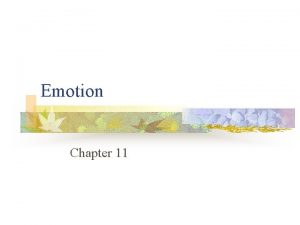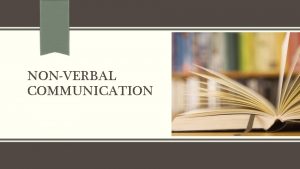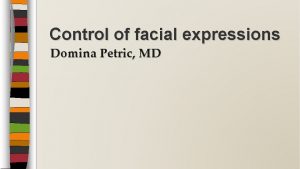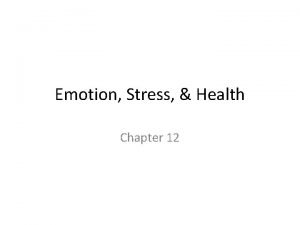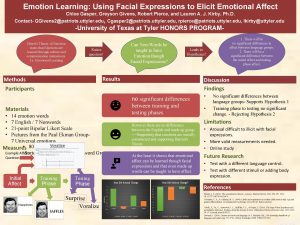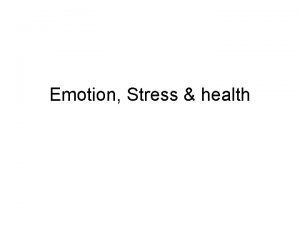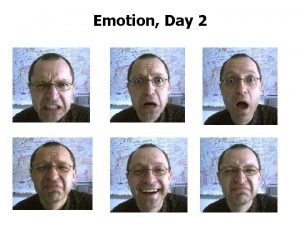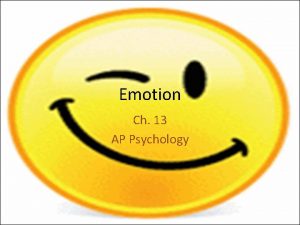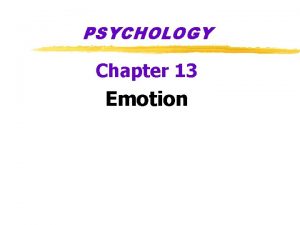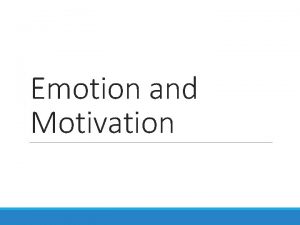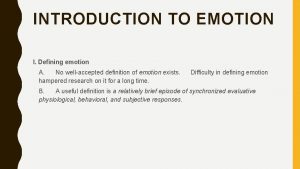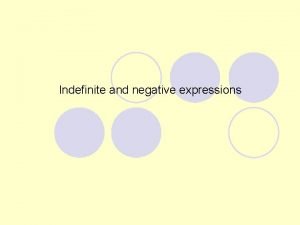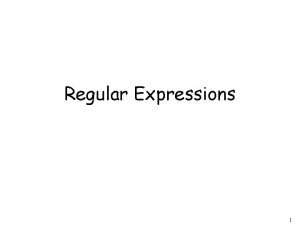Emotion Defining Emotion Emotion not just facial expressions
































- Slides: 32

Emotion

Defining Emotion ►Emotion: not just facial expressions

True Emotion Involves: ►Physiological Arousal includes internal behaviors like heart pounding (when excited? ), dry-mouth (when nervous? ), or shortened breath (when tired? ) ►Expressive Behaviors includes external behaviors like a quickened walking pace (when fearful? ), jumping (excited? ), smiling (happy? ) ►Conscious Experience includes identifying thoughts (is this a kidnapping? ), and feelings (fear, happiness, anger, etc. ? )

►How do we experience an emotion?

►James-Lange Theory § The experience of emotion is a result of physiological change. ►Your car skidded on slick pavement. As it fishtailed, you hit your breaks and regained control. You noticed that your heart was racing and that you were shaking. You identified and felt the emotion of fear after your body’s response.

James – Lange Theory EXAM! BUTTERFLIES IN YOUR STOMACH FRIGHT!


►Cannon-Bard Theory § The theory that an emotion arousing stimulus simultaneously triggers both a physiological response and a subjective experience of emotion ►Your car skids across the highway, and you simultaneously get scared and begin to have an accelerated heart rate and sweat. One doesn’t cause the other…they occur at the same time.

Cannon-Bard Theory BUTTERFLIES IN YOUR STOMACH EXAM! FRIGHT!


►Schachter’s Two-Factor Theory § To experience emotion, you must be physically aroused and must be able to cognitively label the arousal ►Your car skids across the highway, and your heart rate increases and you begin to sweat. You go through a mental checklist of the characteristics of being afraid, recognize your physical symptoms, and then feel fear.

Quickening of the pulse, sweaty palms – could be fear or excitement. Stanley Schachter What we THINK determines our emotions

►Temporal Sequence Theory § When confronted with new stimuli, we appraise it’s emotional value first and then react accordingly. ► IE. We meet a dog for the first time. §§If. Ifthe tailinand brushes against thedog dogisiswagging growlingits and a perceived “mean”us. We appraise the dog “kind”, feel “happy” mood, our feeling is as “fear” andand our we behavior is to around run. the dog, and our behavior is to pet the dog. §§The thedog, sameour dog our automatic Thenexttimewe wemeet see the automatic emotion feel happy and our reaction is to pet reactionisisto“fear” and run the dog.

►Review § You see a car coming straight at you! What emotions will you experience? Your physical response James-Lange Theory: will occur before you experience the feeling of fear Your physical response Cannon-Bard Theory: will occur at the same time as you feel fear.

your physical response will Schachter two-factor: occur first, and then when you label the emotion correctly, then you will experience the emotion of fear Temporal Theory your last experience with a car coming at you was when your Mom was picking you up from soccer practice, so your emotional reaction is “happy”, and your behavior is to approach the car. Not until we have labeled that the driver is “mean” and trying to kill us do we change our emotion to “fear”, and run.

►What kinds of emotions can we feel?

Carroll Izard identified 10 basic emotions: § Joy § Interest-Excitement § Surprise § Sadness § Anger § Disgust § Contempt § Fear § Shame § Guilt

Two-Dimensional Model § -Explains Positive and Negative Emotions § The value of any emotion is a measure of pleasantness combined with and arousal ►What’s the difference between “happy” and “ecstatic”? The amount of arousal! ►What’s the difference between “happy” and “sad”? The amount of pleasantness!

Two-Dimensional Model High Ecstatic! Happy! Pleasantness (valence) Depressed Positive Arousal Negative Low

►Do different emotions activate different physiological responses?

NO ►Emotions like fear, anger, and sexual arousal can all elevate heart rates, increased respiration, etc. , ►multiple emotions often trigger similar responses

YES ►Amygdala brain activity is different for different emotions ►Different lobes and hemispheres of the brain are activated during different emotions (right during negative, left during positive) ►Though some physiological responses are similar for multiple emotions, different emotions do stimulate different facial features

Yes ►A polygraph machine can identify the different physiological responses accompanying different emotions in order to detect lies.

NO ►Physiological arousal is much the same from one emotion to another (anxiety/irritation/guilt) ► Innocent people respond with heightened tension – polygraphs err about 1/3 of the time. ► Never take a polygraph if you are innocent!

►How Are Emotions Expressed?

►Emotions can be felt internally as the physiology of the body changes, and emotions can be projected outwardly through a variety of non-verbal methods, including: § Facial Expressions Body Language § Tone of Voice

►Facial expressions are relatively universal ► There are both conscious and unconscious facial features that express emotion. Facial Expressions

For example, a frown is an expression of sorry or distress (consciously), but in addition, generally, your eyebrow lifts as well (unconsciously).

Facial Expressions ► Trying to fake a smile? authentic smiles unconsciously activate muscles under the eyes and raise cheeks. ► Feigned smiles often continue far too long, and get switched on and off more often. Paul Ekman

Emotional Expression Among The Fore

Facial Feedback! ►Assuming emotional expressions and postures can trigger a feeling ►Meaning, if you are sad, and force a smile, the muscles associated with smiling generate positive feelings in the brain. Vice-Versa holds true as well. I am happy.

Body Language and Emotions ► The body conveys how a person feels. ►when reading the body look for a coherent cluster of any of the following: Facial expressions Gestures, body movements Tone of voice/ pace of voice
 Relative clauses defining and non defining
Relative clauses defining and non defining Relative clauses defining and non defining
Relative clauses defining and non defining Non defining relative clauses as sentence modifiers
Non defining relative clauses as sentence modifiers Defining relative clause meaning in telugu
Defining relative clause meaning in telugu Non-defining relative clauses cümleleri
Non-defining relative clauses cümleleri Define and non defining relative clauses
Define and non defining relative clauses Cavernous sinus
Cavernous sinus Just right scale
Just right scale Paul ekman universal facial expressions
Paul ekman universal facial expressions Facie
Facie Unconscious facial expressions
Unconscious facial expressions Nification
Nification Roudram navarasam
Roudram navarasam Mouth morphemes in asl
Mouth morphemes in asl Facial expressions are a part of what mcq
Facial expressions are a part of what mcq Hci-asm-gji -site:youtube.com
Hci-asm-gji -site:youtube.com Subjunctive with emotion
Subjunctive with emotion Why is it difficult to get poison in mantua
Why is it difficult to get poison in mantua Vocab level d unit 3
Vocab level d unit 3 Love is an action not a feeling
Love is an action not a feeling It's not what you say it's how you say it
It's not what you say it's how you say it Hobby dancing
Hobby dancing Characteristics of just-in-time partnerships do not include
Characteristics of just-in-time partnerships do not include Not just anyone
Not just anyone Not just bingo march
Not just bingo march Nothing much just chilling
Nothing much just chilling 580625685 mod 701
580625685 mod 701 Defining intelligence
Defining intelligence The defining moment in greek history is the
The defining moment in greek history is the What are the 4 characteristics of chordates?
What are the 4 characteristics of chordates? Define social issue
Define social issue Lord capulet defining quotes
Lord capulet defining quotes Lady montague defining quotes
Lady montague defining quotes






